Despite November historically sees an ice build-up at the poles, the past month saw a brief period of ice retreat in the Arctic. This is unprecedented in the 40 years of satellite imagery. In the Arctic, where global warming is twice as strong than the global average, sea ice is only half of what it was just three decades ago, corresponding to an area the size of Mexico that’s been lost. At the other end of the world, in Antarctica, latest readings show a record low for sea ice in November, despite the last couple of years showed record highs.
Ignoble records
Ice in the Arctic follows a seasonal cycle, growing in extent during fall and winter and retreating during spring and summer. Over the last couple of decades, less and less ice has been added during the dark months but losing ice in November is unheard of. Specifically, 19,300 square miles of ice were lost in mid-November before the drop was offset by a resuming upward trajectory.
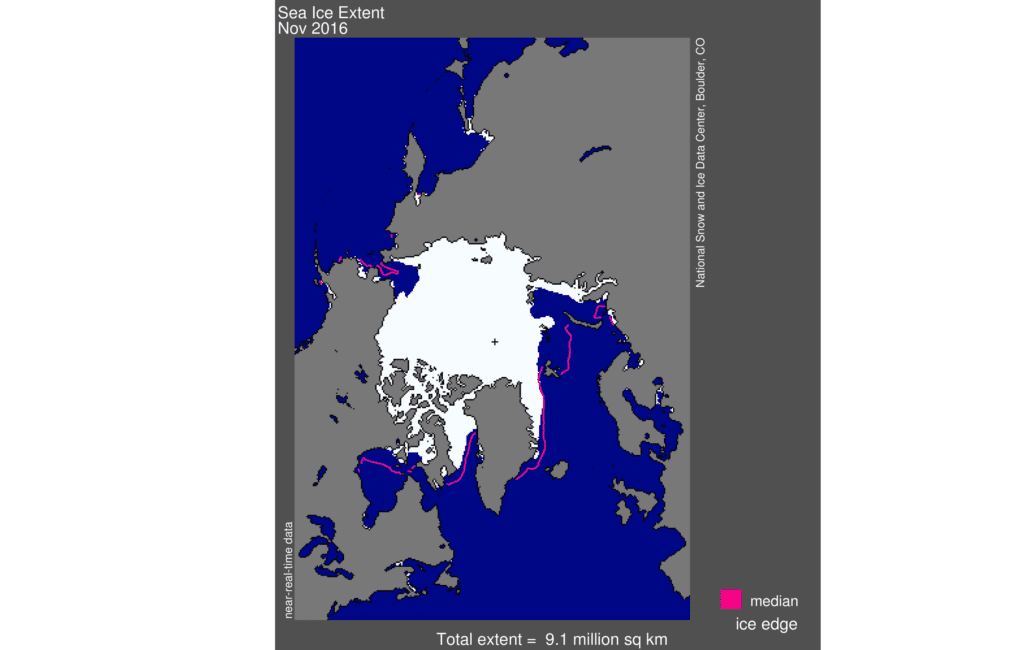
At the end of November, the Arctic showed a sea ice area 753,000 square miles below the 1981 to 2010 long-term average. Climate Central reports the unusual dip during what should have been an ice-growing season was caused by southerly winds that pulled warm air and ocean water to the region. The currents kept sea ice from forming in the Barents Sea, north of Scandinavia and eastern Russia. Sea surface temperatures in the area were up to 7°F (4°C) above normal during November.
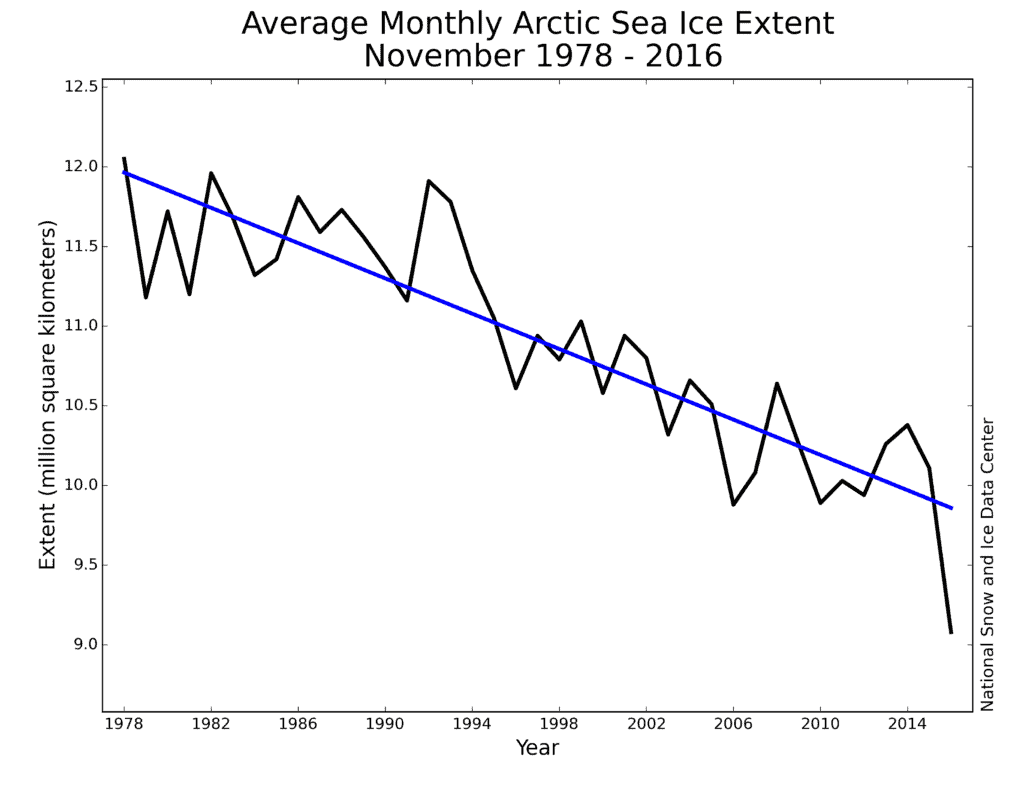
In Antarctica, a continent that is nearing summer, sea ice extent was also unusually low for November. Here, sea ice was 699,000 square miles below the 1981 to 2010 average or twice as much the previous record-low for November, according to the National Snow and Ice Data Center. The decline was attributed to warm air and changes in the air currents.
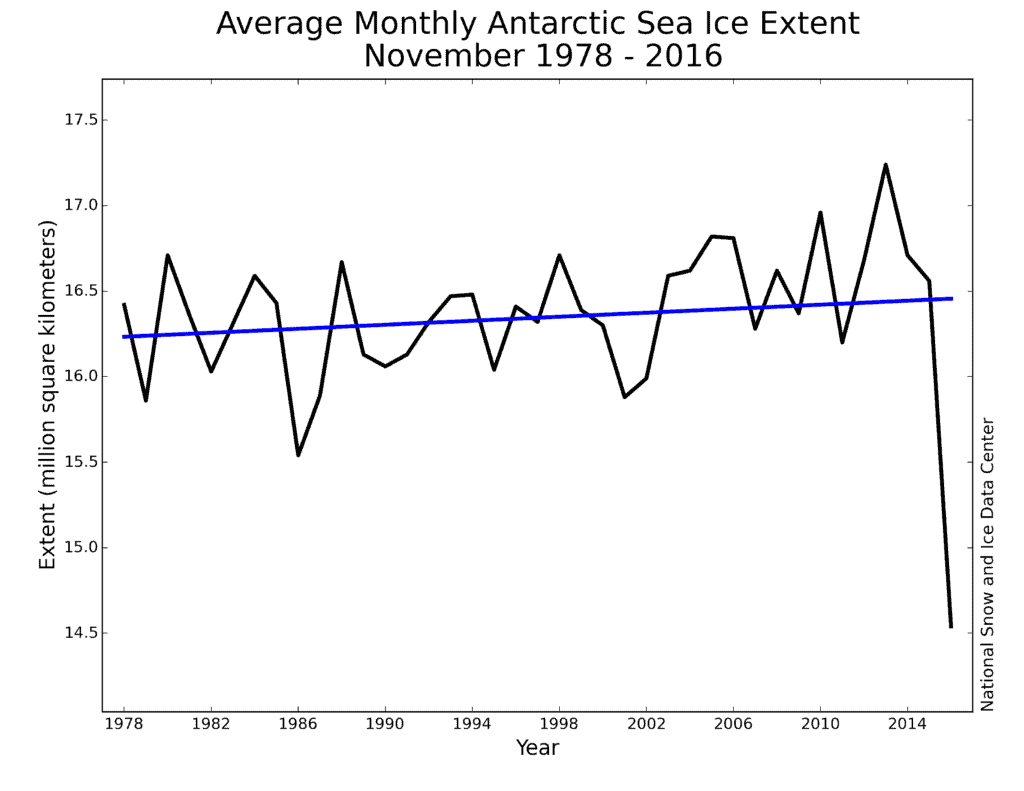
Sea ice in both Antarctica and the Arctic has declined due to greenhouse gas emissions which warm the atmosphere and raise the heat content of the oceans. One recent study published in the journal Science linked Arctic sea ice loss to cumulative CO2 emissions in the atmosphere through a simple linear relationship. The observed relationship is equivalent to a loss of 3 square meters (9.9 square feet) for every metric ton of CO2 added to the atmosphere.
If you find all the data and graphs posted in this article are clear enough, some still beg to differ. Despite record lows in global sea ice, vested interests and useful idiots stick to an ignorant narrative. Some go as far as saying we’re in ‘global cooling’, a blatant attempt to spread fake news.
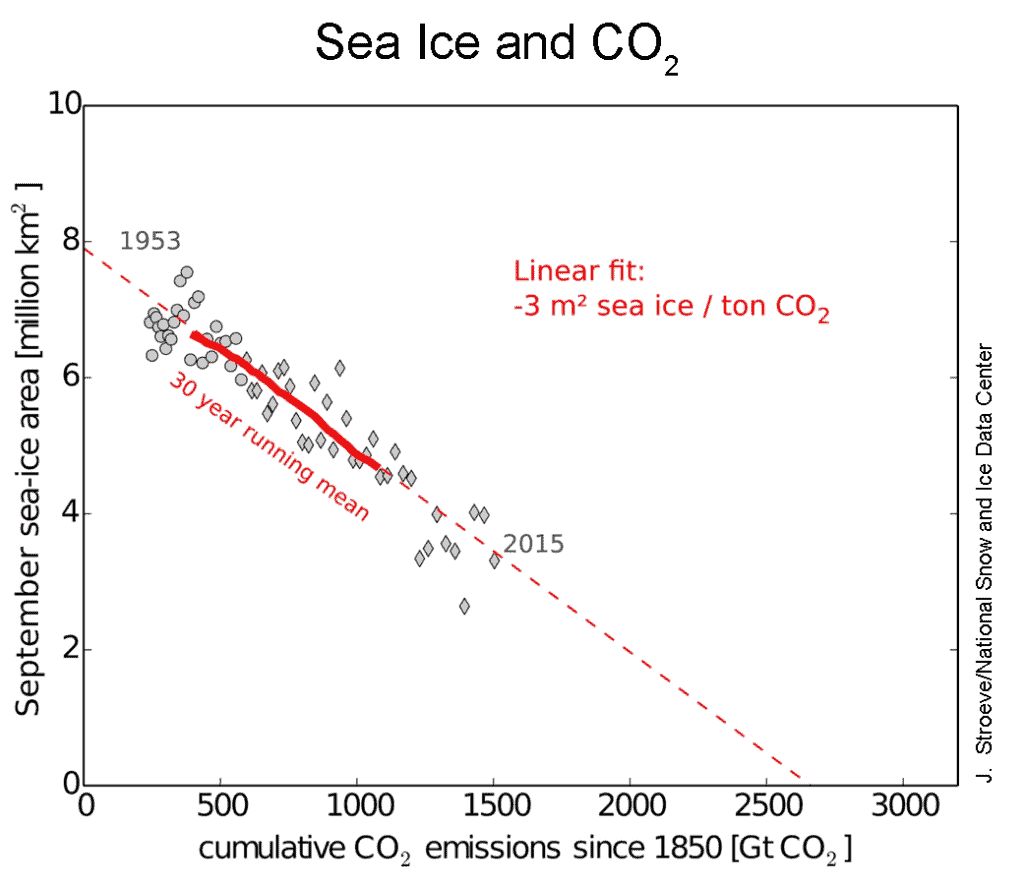
Arctic wildlife set to plummet. Polar bears to plunge by a third in the next 35 years
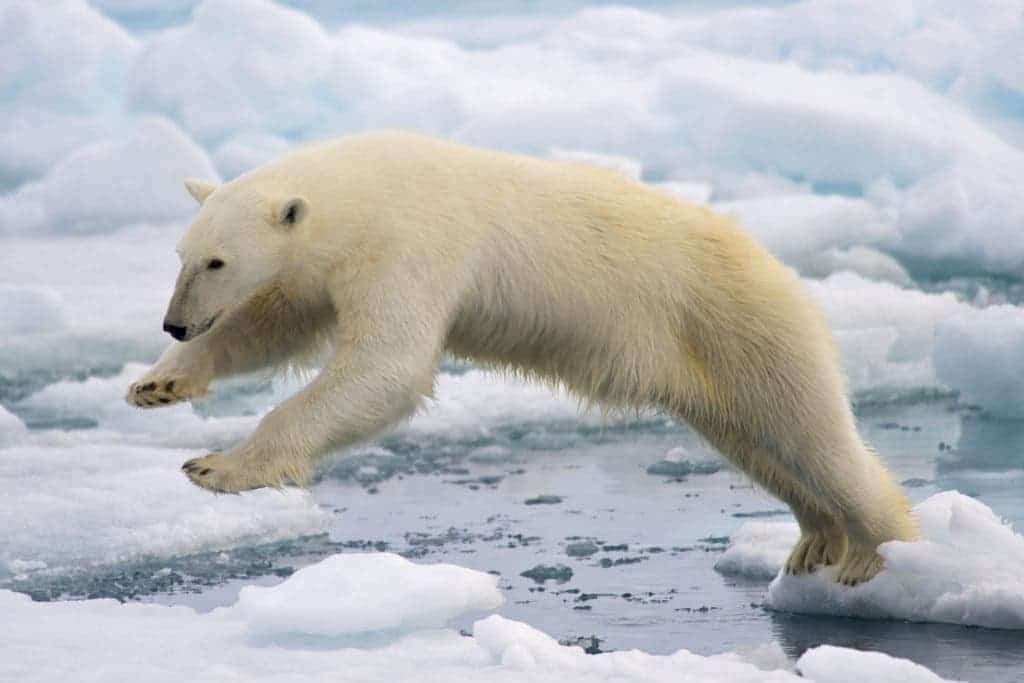
Global sea ice has declined dramatically, as outlined earlier, with dramatic consequences for wildlife. One recent study found there’s a 70% chance polar bear populations around the world, now estimated at 26,000 individuals, will drop by more than 30 percent over the next 35 years. That’s only three generations of polar bears. The team led by Eric Regehr of the US Fish and Wildlife Service in Anchorage, Alaska, used 35 years of satellite data on Arctic sea ice and 19 distinct polar bears groupings scattered across four ecological zones to forecast how these majestic creatures will fair in the future.
Polar bears depend on sea ice for much of their livelihoods. The conclusions reached by Regehr’s team goes to show how hard these animals (and the ice that keeps them alive) are pushed right now.



